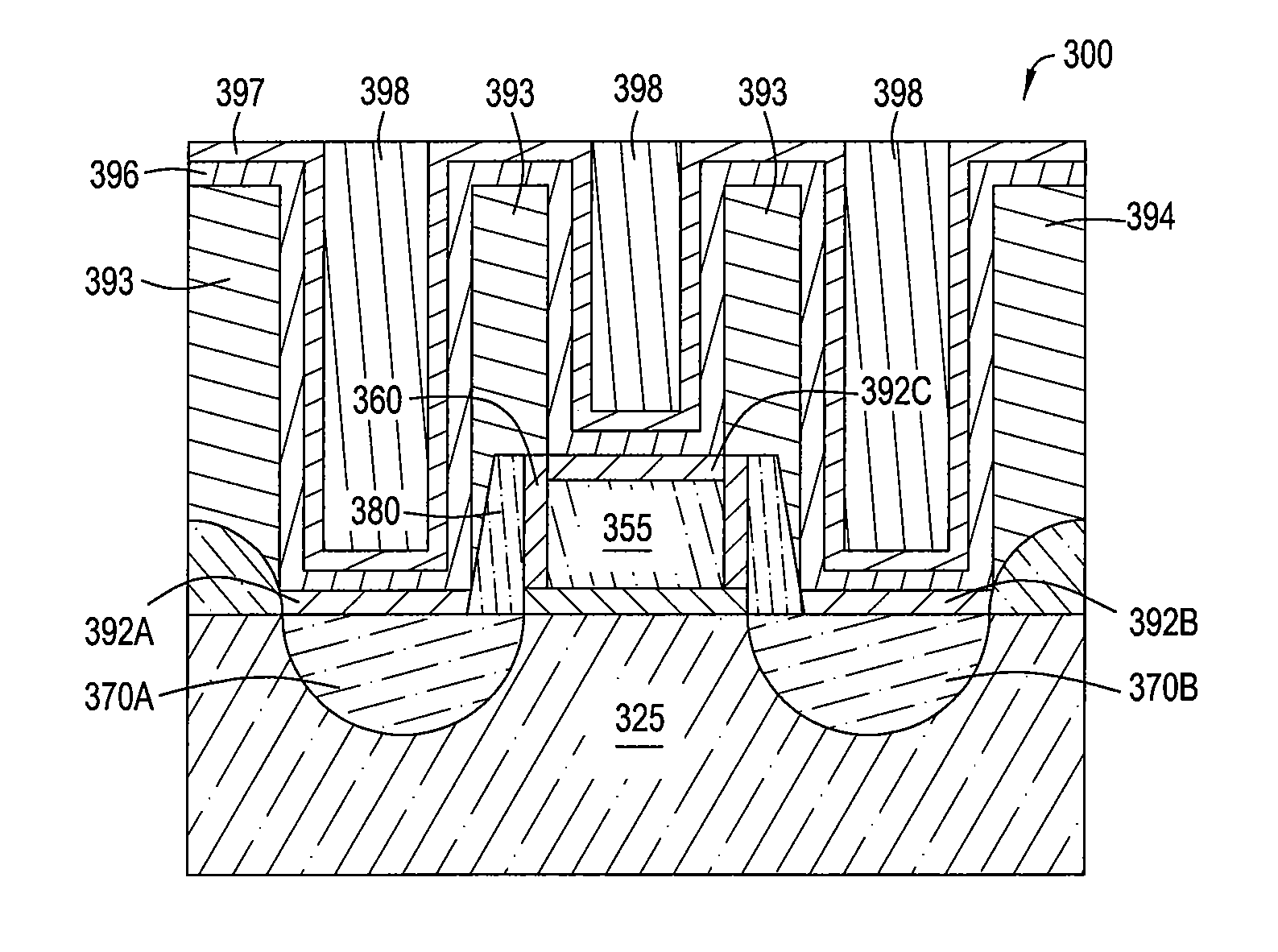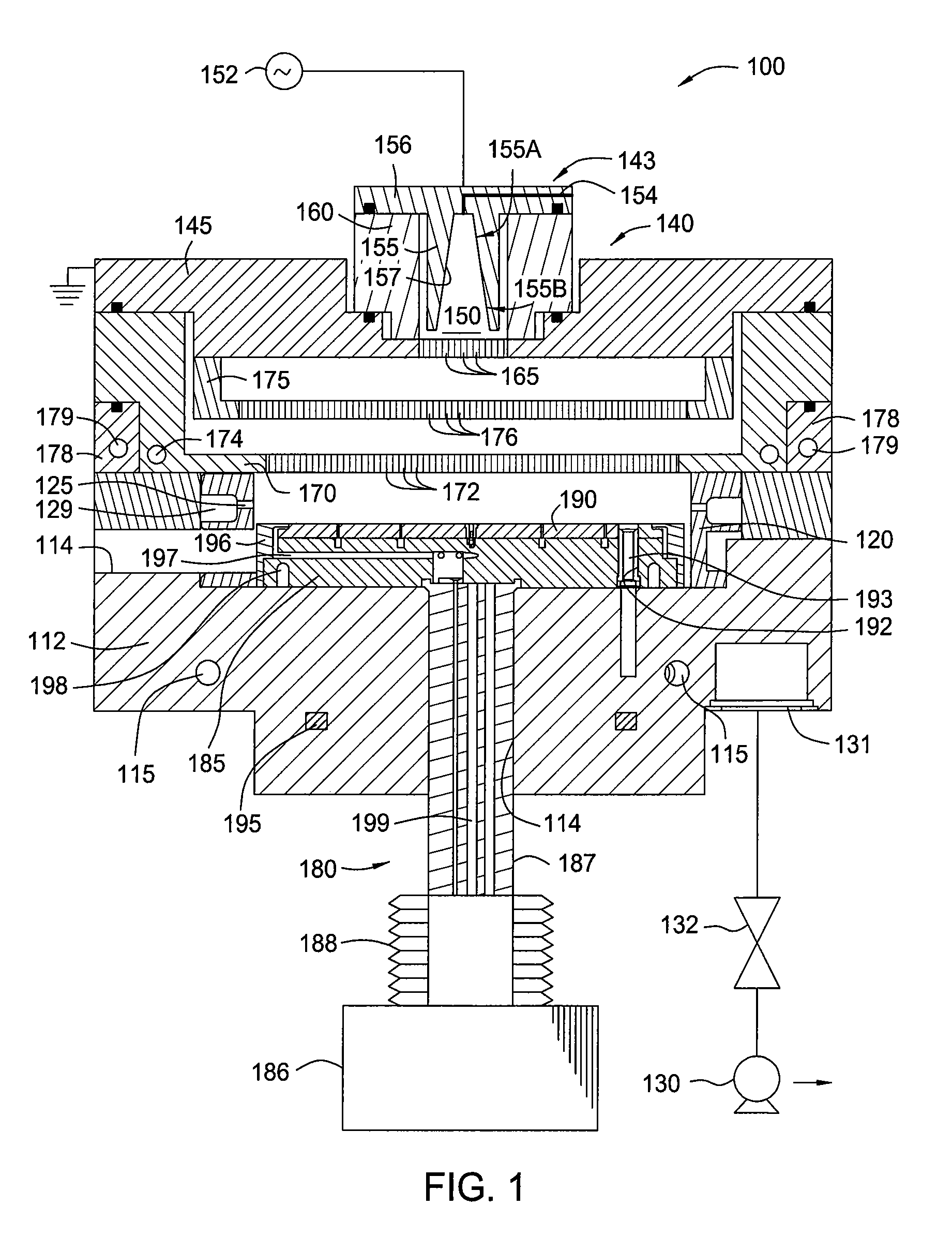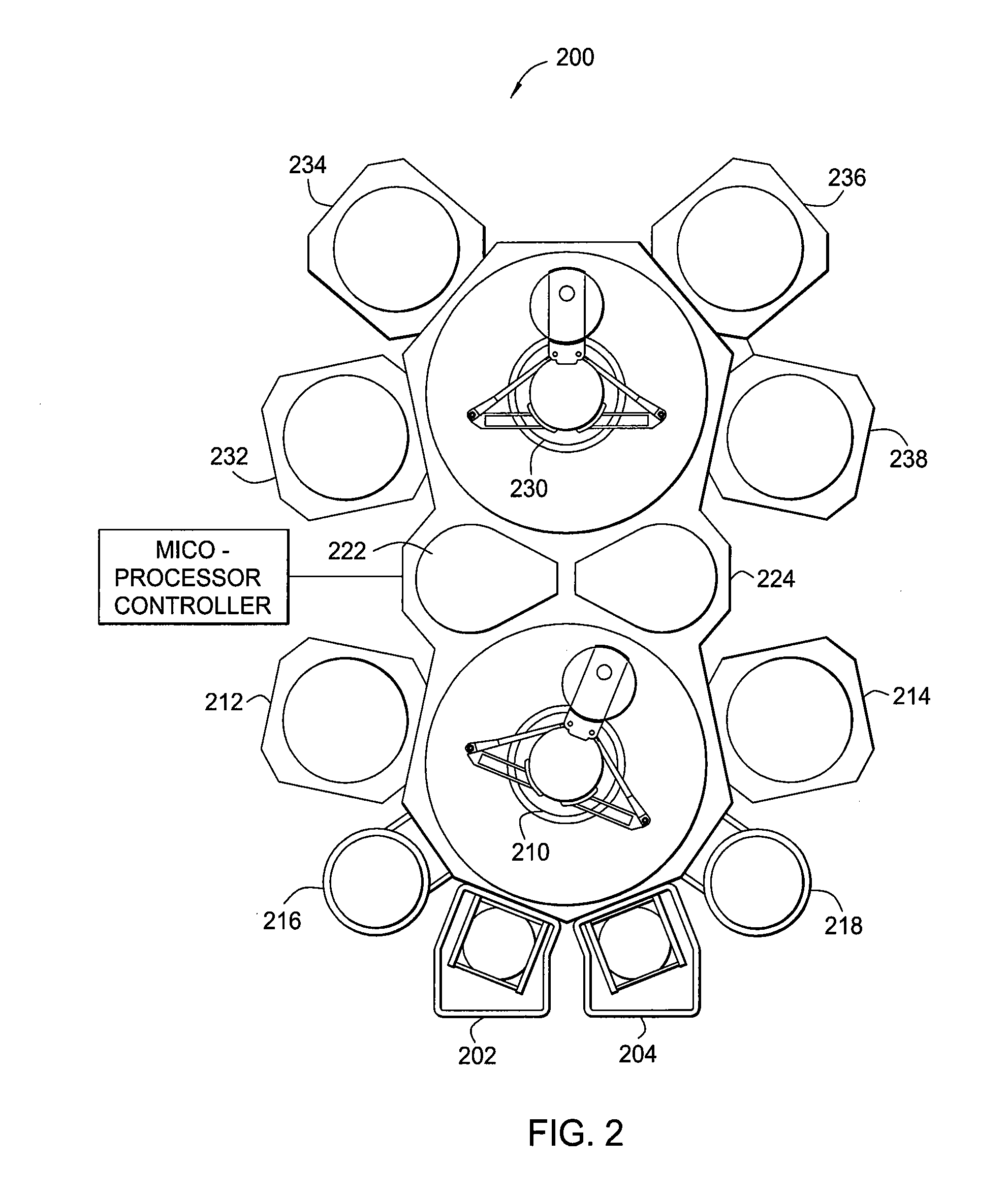Process with saturation at low etch amount for high contact bottom cleaning efficiency for chemical dry clean process
a technology of chemical dry cleaning and contact bottom surface, which is applied in the direction of semiconductor devices, electrical equipment, semiconductor/solid-state device details, etc., can solve the problems of damage to the underlying surface, significantly lower oxide removal at and very low cleaning efficiency of the contact hole bottom surfa
- Summary
- Abstract
- Description
- Claims
- Application Information
AI Technical Summary
Benefits of technology
Problems solved by technology
Method used
Image
Examples
Embodiment Construction
[0017]As will be explained in greater detail below, a substrate having a contact surface at least partially disposed thereon is treated to remove metal oxides or other contaminants prior to contact level metallization. The term “contact surface” as used herein refers to a layer of material that includes a metal silicide that can form part of a gate electrode. In one or more embodiments, the metal silicide can be nickel silicide, cobalt silicide, titanium silicide or any combinations thereof. The metal silicide can also include tungsten, Ti / Co alloy silicide, Ti / Ni alloy silicide, Co / Ni alloy silicide and Ni / Pt silicide.
[0018]The term “substrate” as used herein refers to a layer of material that serves as a basis for subsequent processing operations and includes a “contact surface.” For example, the substrate can include one or more conductive metals, such as aluminum, copper, tungsten, or combinations thereof. The substrate can also include one or more nonconductive materials, such ...
PUM
 Login to View More
Login to View More Abstract
Description
Claims
Application Information
 Login to View More
Login to View More - R&D
- Intellectual Property
- Life Sciences
- Materials
- Tech Scout
- Unparalleled Data Quality
- Higher Quality Content
- 60% Fewer Hallucinations
Browse by: Latest US Patents, China's latest patents, Technical Efficacy Thesaurus, Application Domain, Technology Topic, Popular Technical Reports.
© 2025 PatSnap. All rights reserved.Legal|Privacy policy|Modern Slavery Act Transparency Statement|Sitemap|About US| Contact US: help@patsnap.com



